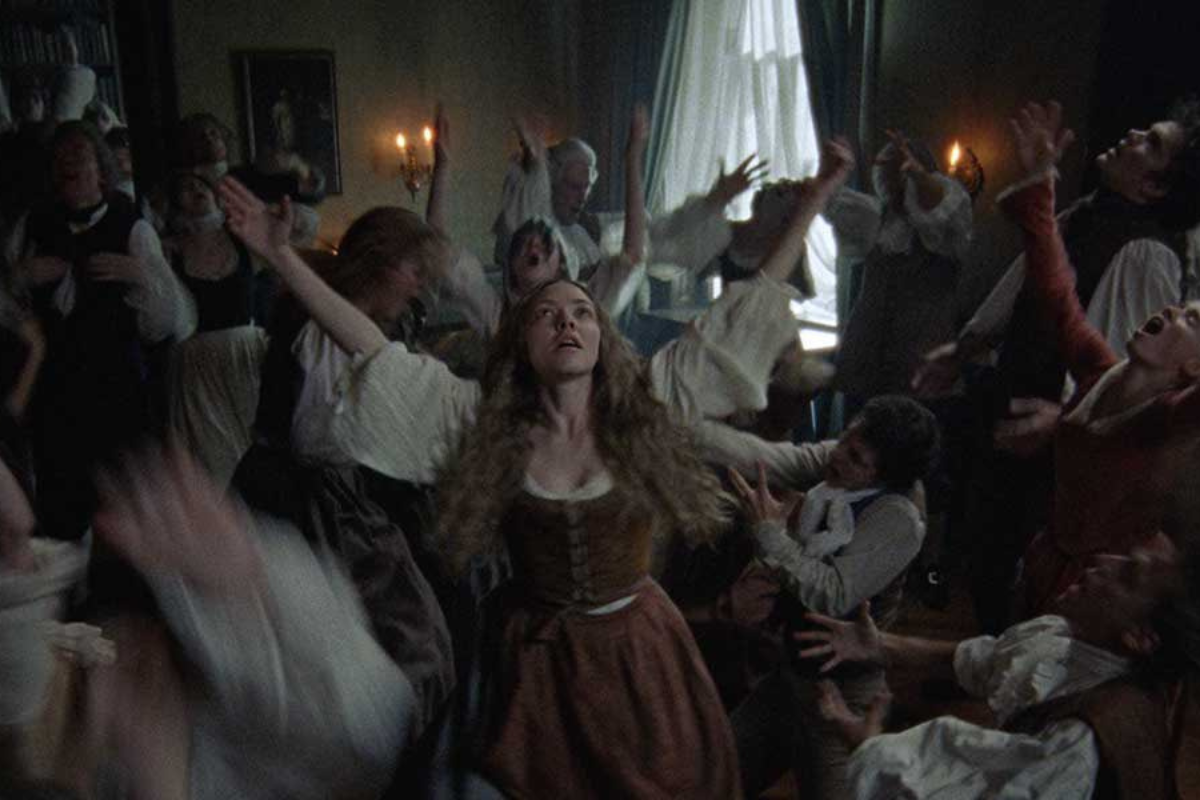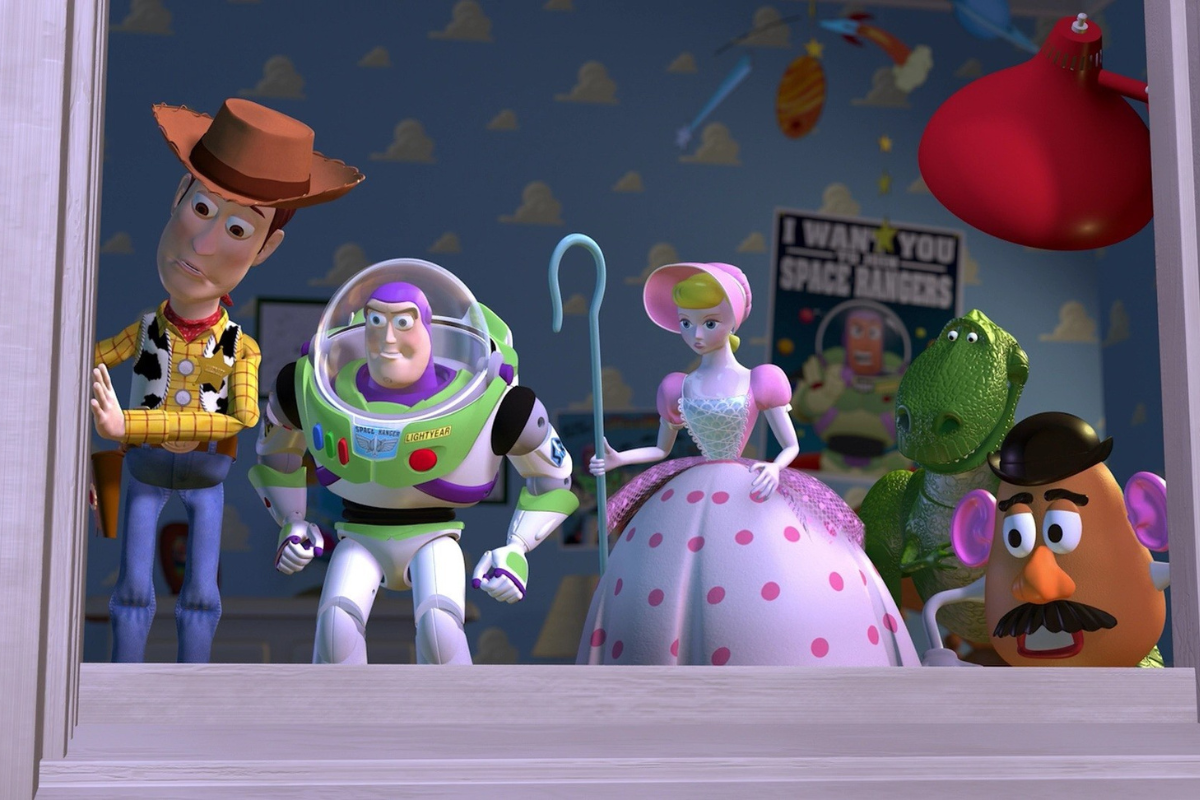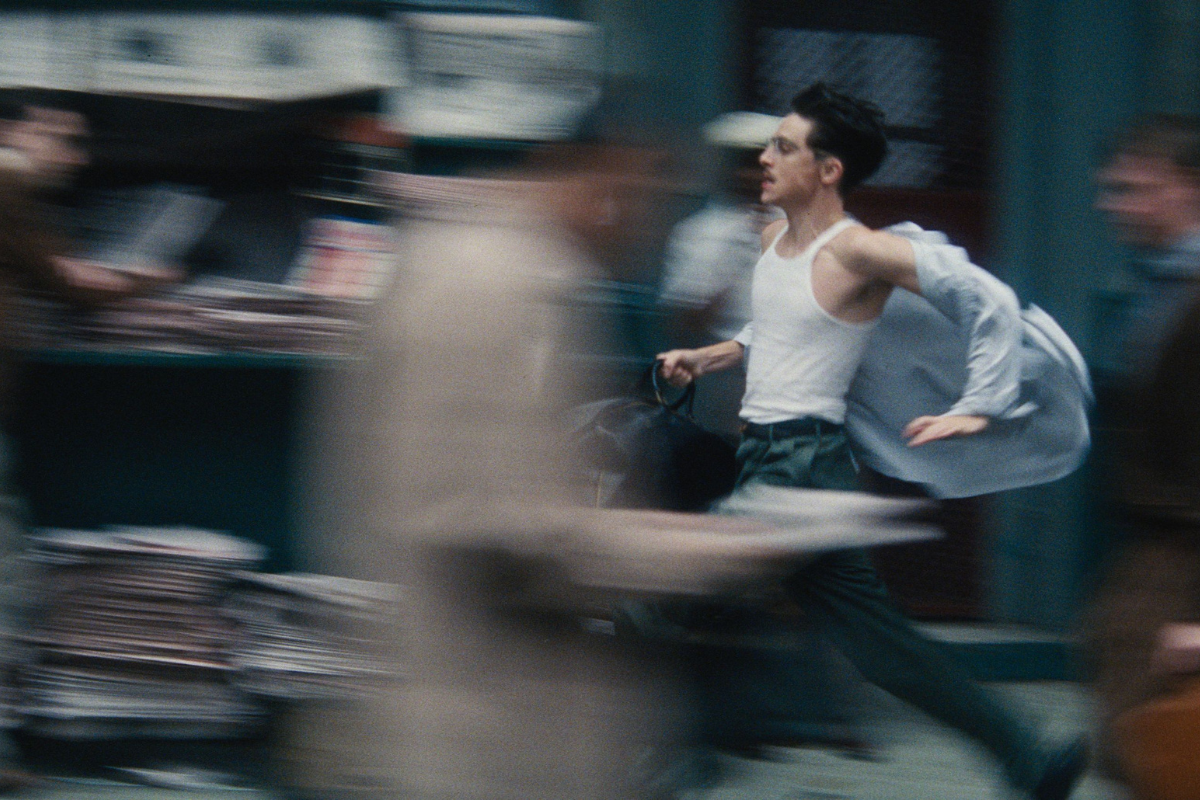UNDERSTANDING SCREENWRITING: Lots of Women and a Few Guys
Tom Stempel analyzes A Simple Favor; The Old Man and the Gun; Juliet, Naked; The Book Shop; Operation Finale; Colette; All About Nina; The Sisters Brothers; and the book, When Women Wrote Hollywood.
Tom Stempel analyzes A Simple Favor; The Old Man and the Gun; Juliet, Naked; The Book Shop; Operation Finale; Colette; All About Nina; The Sisters Brothers; and the book, When Women Wrote Hollywood.
My apologies to Anna and Henry.
A Simple Favor (2018. Screenplay by Jessica Sharzer, based on the novel by Darcey Bell. 117 minutes)
Paul Feig, the director of this film, is primarily known as a director of comedies. He’s directed television comedies, and he has had spectacular box-office success with his recent theatrical features, including Bridesmaids (2011), The Heat (2013), and Spy (2015). He wanted to try something different, and when Sharzer’s screenplay, which had been turned down by a lot of people, came to him, he could see it as a “Hitchcockian” picture, which he wanted to do.
Thank God it is not a Hitchcockian picture.
It’s much more interesting than something in the traditional Hitchcock line. I have always thought Charles Bennett’s Fat English Friend, as he’s known in these parts, was much more interested in scenes than character. Some people objected to that when I mentioned it in this column back in its House Next Door days. You can read the wrap-up of that discussion here.
What Feig has in Sharzer’s script is as much a character study as a thriller, although it is not without its thriller moments. We first meet Stephanie [Anna Kendrick] when she is doing her vlog about cooking for mothers, then learn how she became best friends with Emily [Blake Lively], the mother of a son in Stephanie’s son’s class. Emily is about as opposite of Stephanie as you can get. She’s rich, married to a novelist with writer’s block, has a marvelous house, and works in a glamorous job in the city, i.e., New York. No wonder Stephanie is enchanted by her. And perfectly willing to pick up Emily’s son from school and have him over for playdates and…well, one day Emily goes missing.
That brings an element of mystery into the story, but Emily is so interesting a character we are sorry to not have her around. Even more so when she turns up dead, drowned in a lake in Michigan. Except then Emily’s son begins to think he sees her… But we’ve seen the body…
Stephanie is so involved with Emily that she begins to play detective on her own. It turns out she is really good at it, and is great at lying to people to get information from them. Just as Emily and Stephanie are great characters, so are the people Stephanie meets on her quest.
I suspect one reason people kept turning down the script is that the focus is on the women, all of whom are interesting characters. The men are very such secondary characters, which I think makes the film more interesting.
So the film provides a lot of great work for the actresses involved. In writing here about Pitch Perfect I said of Anna Kendrick, “I hate to say it, but on the basis of this film, she may end up a great character actress rather than a star. Unless somebody out there, hint, hint, writes a really great star part for her.” In writing about Pitch Perfect 2, I qualified that by saying, “Beca is a little looser than before, and I may have to take back my comment in the review of the first film that Anna Kendrick can’t carry a picture as a star.”
On the basis of A Simple Favor, I offer my sincere apologies to Kendrick, who plays Stephanie. Boy, does she carry this picture. Blake Lively is just as good as Emily in what is maybe her best performance yet. And Jean Smart and Linda Cardellini are not wasted in supporting roles.
The men are definitely secondary, but I also have to add another apology to Henry Golding. I did not think he was all that impressive as an actor in Crazy Rich Asians, but here he shows some actual acting chops.
So you have a good script, a good cast, and a director smart enough to stay out of their way. Good career choice, Paul.
Twinkle, Twinkle, Major Stars
The Old Man and the Gun (2018. Screenplay by David Lowery , based on the New Yorker article by David Grann. 93 minutes)
Forrest Tucker [Robert Redford] (no relation to the action movie star of the 40s and 50s) is an old man who very politely robs a bank. And not for the first time. What makes this time interesting is that while being chased by the police, who are some distance behind him, he stops to help Jewel [Sissy Spacek], a woman who is probably not quite as old as he is. Her truck is on the side of the road with the hood up. Forrest stops, gets out, comes over and looks at the engine. And the cops drive right by.
Because Forrest is so polite, Jewel goes to a coffee shop with him and they chat. He says he’s a salesman, the later tells her the truth, but in a way she won’t believe. He is charming. She is just as charming. If you have seen the trailer for this film, you have seen most of this scene, which takes up a greater part of the trailer, and rightly so. Forrest is played by Robert Redford and Jewel by Sissy Spacek. They bring their full star-power to this scene and to the rest of the movie.
They twinkle big time, as only major stars can. Lowery has written a great scene for them and they act the begeezus out. Lowery also directed, not very well (he does not have the best sense of where to put the camera), but the writing and the stars carry it, and the movie.
We get more bank robberies, and a glum cop chasing Forrest, and at least one more great scene with just Forrest and Jewel. We also get another great scene when the cop goes to see who he thinks is Forrest’s wife, but turns out to be his daughter. You will recognize the actress on her day off from her regular starring role and she, like Redford and Spacek, acts the begeezus out of her scene. Not as much twinkle, but incredible acting skill.
Short Takes
Juliet, Naked (2018. Screenplay by Evgenia Peretz and Jim Taylor & Tamara Jenkins, based on the novel by Nick Hornby. 105 minutes)
You can tell this movie is based on a Nick Hornby novel immediately when we meet Duncan, who is obsessed with an American musician Tucker Crowe, who has gone into hiding. What makes the film interesting is that Duncan is not the main character. His wife Annie is. When Tucker sends Duncan a pre-release version of his greatest hit, Annie writes a review of it on Duncan’s website, which leads to a relationship developing between Tucker and Annie. This leads to great scenes. (The actors, Rose Byrne as Annie, Ethan Hawke as Tucker, and Chris O’Dowd as Duncan, are wonderful.) One great scene is Tucker in the hospital with his assorted children, girlfriends, et al piling up in his room. It’s the best multi-character scene since the finale in Tangerine (2015; see my review here for more detail about writing multi-character scenes).
The Bookshop (2018. Screenplay by Isabel Coixet, based on the novel by Penelope Fitzgerald. 113 minutes)
Florence, a young widow in a small sea-side village in Post World War II England, decides to open a book store. Unfortunately, the building she picks is coveted by Violet Gamart. Gamart is the queen bee of the village and does everything she can to stop Florence. The movie is charming (with great performances by Emily Mortimer as Florence and Bill Nighy as Mr. Brundish, the town recluse), but there is no dramatic tension, just one downhill slog.
Operation Finale (2018. Written by Matthew Orton. 122 minutes)
Since 1961, when infamous Nazi Adolph Eichmann was captured by Mossad, the Israeli intelligence force, there have been a number of films about Eichmann and his capture, which is why when I was watching this I kept thinking of the 2004 film The Alamo.
There had been a lot of films about the Alamo, so why make another one? The only answer for the 2004 film was that so Billy Bob Thornton could play Davy Crockett. He was great, but the rest of the movie was stuff we’d seen before. In Operation Finale, the newest element is that Eichmann is played by Mahatma Gandhi himself, Ben Kingsley. Well, he’s great in the part, but the rest of the movie is, as with The Alamo stuff we’ve seen before.
So the lesson is, if you are going to do something that’s been done before, you had better bring a really fresh approach to the material. Sometimes, sadly, Billy Bob Thornton and Ben Kingsley are just not enough.
Colette (2018. Screenplay by Richard Glatzer & Wash Westmoreland & Rebecca D. Lenkiewicz, story by Richard Glatzer. 111 minutes)
This is about the early life of the great French writer Colette, but it spends too much time on the early years of her marriage to Willy, a literary entrepreneur who publishes her books under his name, both for commercial and egotistical reasons. We know she’s going to demand they be published under her name, but the movie takes forever to get to that.
When she finally gets a publisher to print one with her byline, all we get is a shot of the book in a store window and then titles that describe the rest of her career. We don’t have to see that, but since the film has been building to her name appearing on a book, at least we ought to see her enjoying it. Especially since they have Keira Knightly in her best performance surprisingly cast as Colette.
All About Nina (2018. Written by Eva Vives. 97 minutes) A similar problem here. Nina is a foul-mouthed comedian who moves from New York partly to get away from her abusive boyfriend and mostly to try to get a television gig. She falls in love with a great guy, Rafe, but she has no idea how to deal with a nice guy. Doing a gig, she has an emotional breakdown and spews out a lot of details about what really happened to her as a kid. So she blows the TV gig? No, and there is talk about how she, the TV producer, her agent, and a publicity person may be able to handle it. But we don’t get enough of that, which would be fresher than the love story with Rafe. If Vives, who also directed, was limited to 97 minutes, she could have condensed the love story and developed the end. Or if she could get more time, she could have added on to the end. What she has here at least gives Mary Elizabeth Winstead, whom longtime readers of this column know I have been mad about for years, a terrific opportunity to stretch her already impressive talents as Nina.
The Sisters Brothers (2018. Screenplay by Jacques Audiard and Thomas Bidegain, based on the novel by Patrick Dewitt. 121 minutes)
I love westerns. I love shaggy dog stories. So I should love this shaggy dog western. But I don’t. It may be just a bit too shaggy, or maybe not shaggy enough.
We follow the Sisters Brothers, Eli (John C. Reilly) and Charlie (Joaquin Phoenix), two hired assassins in the west as they try to track down Hermann Kermit Warm, a scientist who has discovered a new way to pan for gold. The brothers’ boss, the Commodore, wants him killed, although we don’t know why. The Commodore also has a tracker, John Morris, trying to find Warm for the brothers. They all meet up, get to be friends, and some of them die. There just is not that much happening to hold our interest, and the dialogue can’t hold our interest much either. Listen to William Goldman’s dialogue in Butch Cassidy and the Sundance Kid (1969) for how it ought to be done.
Two other things, one bad, one good. The bad: as in Solo: A Star Wars Story (2018), the lighting is so dark we can’t see the faces. I suspect Joaquin Phoenix is giving a better performance than we can see. The good: unlike Colette and All About Nina, the ending, especially the last meeting with the Commodore, is nicely developed.
Youngsters Writing About Oldsters
When Women Wrote Hollywood (2018. Book edited by Rosanne Welch. McFarland [McFarlandBooks.com]. 221 pages)
Rosanne Welch is a television writer who also teaches screenwriting at a variety of places. One of her gigs is handling the Los Angeles residency for screenwriting courses offered at Stephens College in Missouri. The students come out to L.A. a couple of times a year, where they get lectures from people connected to the business. One assignment that Welch has her students do is research papers on screenwriters of the past. This book is a collection of those papers, 23 by her students and one by Welch.
Stephens used to be an all-women’s college, but it now takes male students. The preponderance of its students are female, so all of the essays, including two by male students, are about women screenwriters in the early days of Hollywood. Some writers, like Anita Loos, you have probably heard of. Many of them you probably have not.
I was particularly taken by Amelia Phillips’s piece on Jeanie Macpherson. I wrote briefly about Macpherson in my book FrameWork: A History of Screenwriting in the American Film (1988), but one reviewer gave me a hard time for not mentioning that she was Cecil B. De Mille’s mistress. He seemed to think that disqualified her as a writer. Phillips starts out in the first paragraph by noting that Macpherson was only one of De Mille’s three long-time mistresses and has credits on a lot more than just De Mille’s films.
Several of the pieces, such as the ones on Zoe Atkins and Bella Spewack, note that they worked in both the theatre and film, which was a lot more common than is generally assumed about the early days of movies.
Welch takes her students to the Margaret Herrick Library of the Motion Picture Academy and some get into the archives in depth. Others, such as the people writing on Anita Loos and Dorothy Parker, depend mostly on memoirs and biographies. Then there is Pamela Scott, who found very little material on Sarah Y. Mason, the wife and co-writer of Victor Heerman, but was able to follow her connections with other people to give a nice little view of Mason’s career.
Like virtually every other book that is a collection of essays by different writers, the quality varies a lot, but there is enough good stuff to make it worth your while.
What are you doing that could be thwarting your writing career? Learn the Habits of Highly Successful Screenwriters!
REGISTER NOW!
Tom Stempel is a Professor Emeritus at Los Angeles City College, where he taught film history and screenwriting from 1971 to 2011. He has written six books on film, five of them about screen and television writing. You can learn more about his books here. His 2008 book Understanding Screenwriting: Learning from Good, Not-Quite-So- Good, and Bad Screenplays evolved into this column. The column first appeared in 2008 at the blog The House Next Door, then at Slant, and then Creative Screenwriting before it found its forever home at Script.
In the column he reviews movies and television from the standpoint of screenwriting. He looks at new movies, old movies, and television movies and shows, as well as writing occasional other items, such as appreciations of screenwriters who have passed away, plays based on films, books on screenwriting and screenwriters, and other sundries.
In September 2023 Tom Stempel was awarded the inaugural Lifetime Achievement in the Service of Screenwriting Research by the international organization the Screenwriting Research Network.







